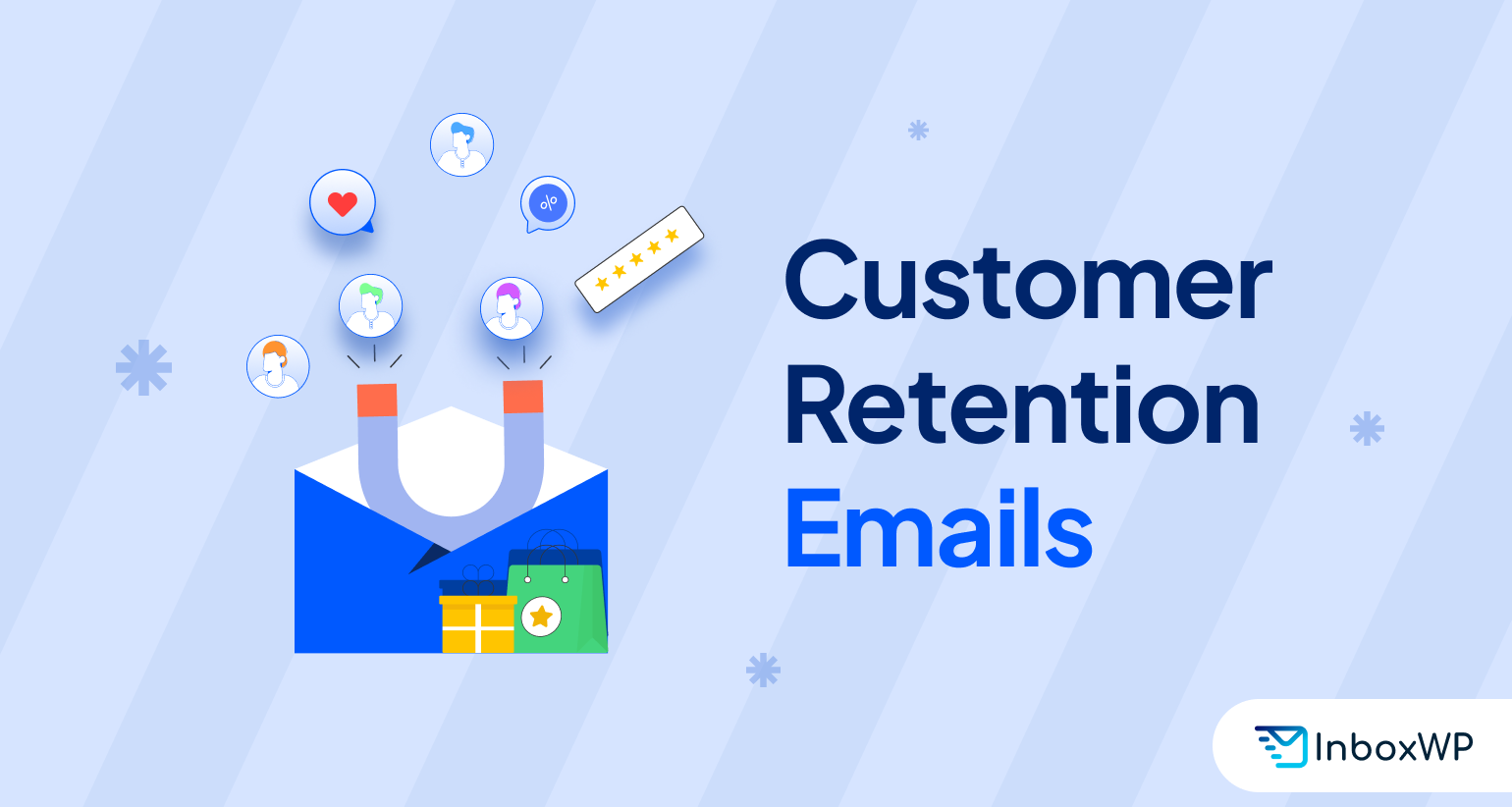‘Customer retention’ is the key to turning one-time buyers into loyal enthusiasts.
It’s like moving from a single success to being a long-term favorite. Acquiring new customers is great, but the real magic happens when you turn them into your biggest fans.
Why does it matter?
Studies have shown that companies with weak customer retention programs can experience churn rates as high as 23-40%.
One of the strategies for customer retention is sending retention emails.
A ‘customer retention email‘ is a message designed to engage and maintain a positive relationship with existing customers.
The ultimate goal of a customer retention email is to nurture loyalty, address customer needs, provide value and ensure a Long-term Relation.
Let’s learn about the importance of customer retention emails and some examples to follow in this blog post. Besides, we will look into some studies to support the importance of a proper customer retention approach.
We will also discuss some tricks and tips for writing a good customer retention email.
First thing first- let’s explore some facts!
A Quick Study on Customer Retention: Why It’s Important
Customer retention programs are no longer a “nice to have“ – they’re a business imperative. Studies by Bain & Company show that increasing customer retention by just 5% can boost profits by a staggering 25-95%.
A study on Salesforce says -acquiring new customers is also far more expensive than retaining existing ones – estimates suggest 5-10 times more expensive.

Without retention efforts, businesses risk high customer churn. As we have seen, companies with weak retention programs can experience churn rates as high as 23-40%.
Customer Retention Email Examples
Let’s look into some examples of customer retention emails. It will help us understand the process of writing successful customer retention emails.
1. Welcome Emails
Welcome emails are essential in creating a positive initial interaction with new customers or subscribers.
They offer an opportunity to introduce your brand-provide product information and establish a connection with buyers.
Studies say- welcome emails have an open rate of 50%. That means there is a high chance of these emails being read!
Here’s an example of a Welcome Email from Product Hunt!

2. Product Update or Feature Announcement Emails
Feature announcements and product update emails are very important for keeping customers informed and engaged.
When customers feel they’re not updated, they’re more likely to leave. An announcement email provides valuable information about new features, enhancements, and improvements to your product or service.
FlyWP did a very fantastic job here by updating their launching in Product Hunt.
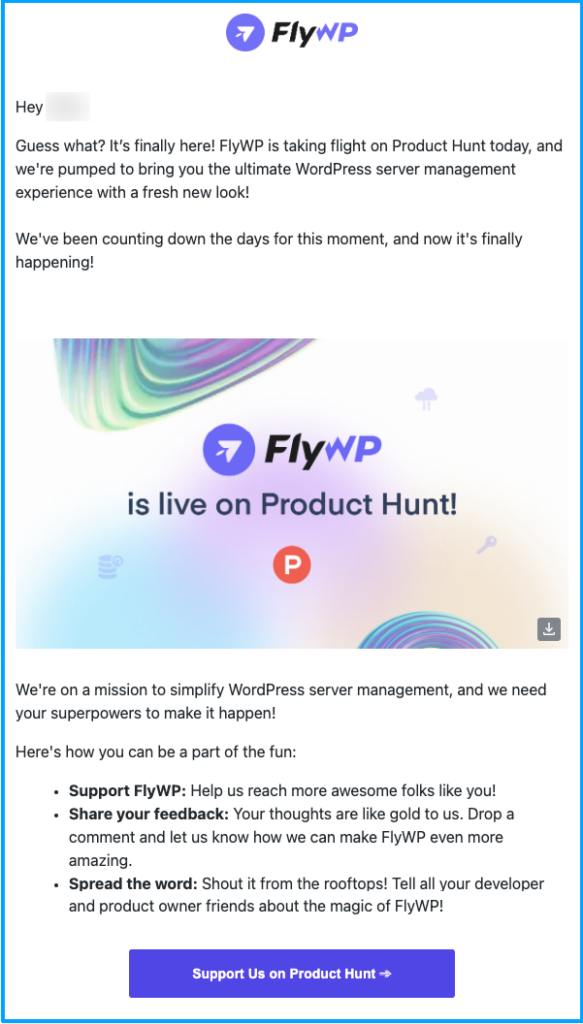
3. Promotional Emails
Promotional emails play a vital role in customer retention. Businesses offer incentives that encourage customers to engage and purchase.
By strategically writing promotional emails tailored to your existing customers’ preferences and needs, you can reinforce their loyalty to your brand.
These emails can include exclusive discounts, loyalty rewards, or special offers. Repeating promotional offers and emails may increase the loyalty of your audience toward your business.
See, weMail offered a nice deal back in February!

4. Cart Abandonment Email
Cart abandonment emails are effective for customer retention. They remind customers who left items in their cart to complete their purchases.
Businesses can recover 3%-14% of abandoned sales, according to Klaviyo.
Let’s look at the example of Omaha Steaks.

5. Reminder Email
Reminder emails are messages sent to notify customers about an upcoming event, task, deadline, or action they need to take.
Whether it’s a meeting, payment due date, subscription renewal, or incomplete action on a website-reminder emails help keep recipients informed and organized, ultimately increasing engagement and driving desired actions.

Reminder emails can increase customer engagement with your brand. Studies show birthday reminder emails with special offers can lead to a 3x increase in transaction rates compared to generic emails.
6. Thank You Email
‘Thank You emails’ has open rates exceeding 40%, which is significantly higher than the average marketing email open rate of around 25%.
Thank you emails are crucial for customer retention. They express gratitude to customers for their support and purchases, fostering a sense of appreciation and loyalty.
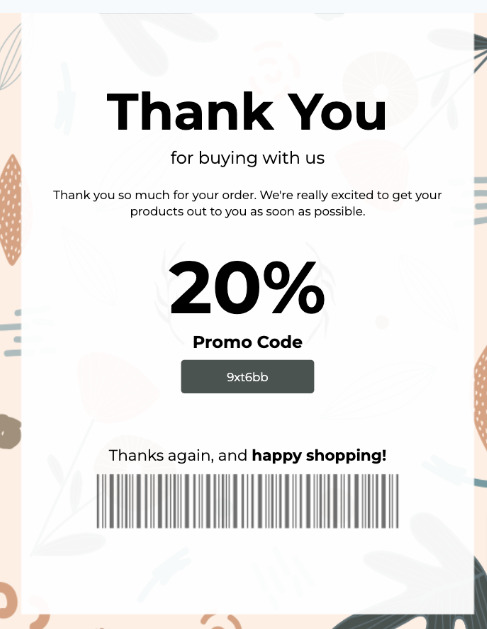
Source: unlayer.com
These emails also provide an opportunity to further engage customers by offering exclusive discounts, inviting feedback, or suggesting related products or services.
7. Occasion Emails
Special occasion emails are personalized messages sent during significant events like birthdays or holidays. They show appreciation and build customer loyalty.
Research from ‘Email Uplers’ indicates that occasion emails with special offers can lead to a 3x increase in transaction rates compared to generic emails.

Acknowledging these occasions strengthens relationships and boosts engagement.
8. Review Request Emails
Spiegel Research Group found that businesses that request reviews see a 70% increase in the number of reviews they receive. They are essential for gathering feedback and improving customer satisfaction.

These emails show that the business values the opinions of its customers. They help to build trust and loyalty.
You can read details about the review request email here.
9. Milestone Email
Milestone emails are messages you send to your customers to celebrate their accomplishments while using your product or service. These emails cheer them on and encourage them to keep reaching for their goals.
See, what Duolingo did for me. They generated a report about my progress which is very interesting!

When you send these emails- you show your customers that you’re there for them every step of the way, creating a sense of belonging and support within your community.
10. Re-Engagement Emails
Re-engagement emails are like a second chance to reconnect with customers who haven’t engaged with your business recently. You can use reminders, updates, discounts, and other tricks to convince these customers to come back.
To write a good win-back email, you need to understand why the customer left in the first place. It’s not just about their name and email.
You need to know about their experiences, goals, and any problems they had. The more you know, the better your chances of winning them back.
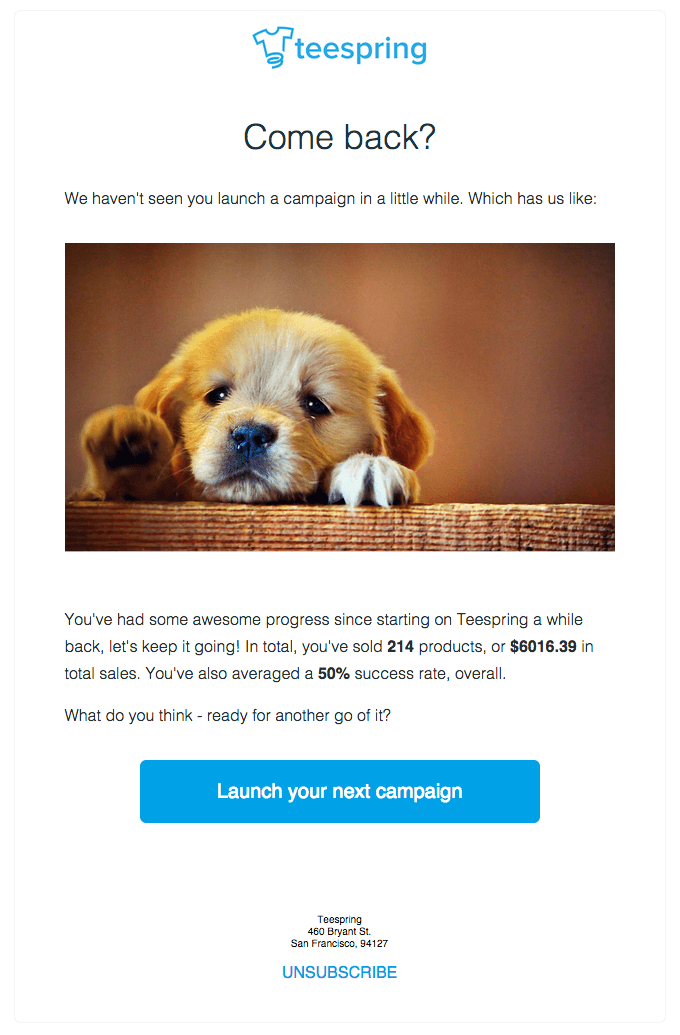
Source: Teespring
Studies suggest win-back email campaigns can achieve success rates anywhere between 14% and 29%.
Key Strategies to Write a Successful Customer Retention Email
There are numerous ways to write successful customer retention emails. In this section, we’ll focus on the best strategies to achieve optimal results.
Let’s explore how to craft compelling emails that increase loyalty and engagement.
A) Segment Your List
Segmentation is like sorting your email subscribers into different groups based on things they have in common.
You might have a list:
- One group of people who live in a certain city,
- Another for those who have bought a specific product
- And another for those who haven’t made a purchase yet.
By doing this, you can send emails that are more targeted and relevant to each group’s interests or needs. It increases the chances of them engaging with your emails and taking action.
B) Personalize Your Email
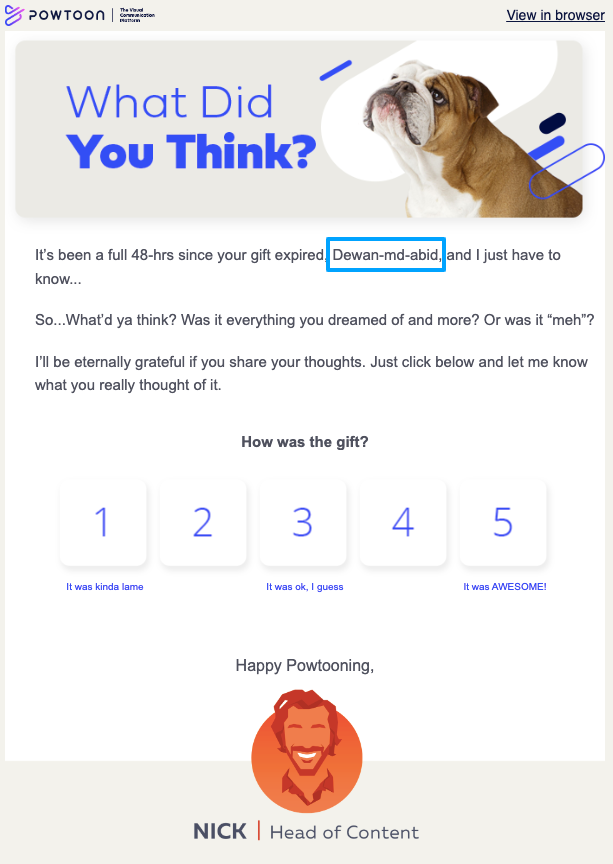
Personalization is about making your emails feel like they’re made just for the person receiving them. It’s like when a friend remembers your name and mentions something you like when they talk to you.
When you personalize an email, this could mean addressing the recipient by name, mentioning their past purchases or interests, or recommending products based on their preferences.
Personalized emails make people feel valued and understood, which can lead to higher engagement and loyalty.
C) Propose Values in Email
Proposed values are the benefits a product or service offers- like solving a problem or enhancing the customer’s experience.
A software product might propose values such as time-saving features or a user-friendly interface. Highlighting these values in marketing helps customers see how your offering can improve their lives.
D) Appeal with Emotions
Connecting with people’s feelings can lead customers more interested in something. It’s like when an ad makes you feel happy or excited, so you want to buy what they’re selling.
It involves making customers feel valued, understood, and appreciated, which strengthens their bond with your brand. By evoking positive emotions like happiness or satisfaction, you can foster long-term loyalty and encourage repeat business.
E) Incentives and Rewards
Incentives and rewards play a vital role in customer retention by offering benefits to loyal customers. These rewards can include exclusive discounts, special offers, loyalty points, or access to VIP programs.

Having these activities, businesses can show appreciation for their customers’ continued support and encourage them to remain engaged with the brand.
This not only increases customer satisfaction but also fosters loyalty and repeat business, ultimately contributing to long-term customer retention.
F) Clear Call to Action (CTA)
A clear call to action (CTA) is essential for customer retention. It guides customers on what action to take next.
Whether it’s making a purchase, signing up for a loyalty program, or providing feedback, a clear CTA prompts customers to engage further with your brand.
By making the next steps obvious and easy to follow, you increase the likelihood of customers ultimately contributing to long-term retention.
G) Customer Insight Request
By encouraging customers to share their thoughts, feedback, or experiences, you show that their input matters to your business. When you show that you are committed to addressing their needs and preferences, they feel honored.

This not only fosters a sense of appreciation and trust but also provides valuable insights that can help improve your products or services.
H) Timing and Frequency
It’s essential to find the right balance to keep your brand top-of-mind without overwhelming recipients. Factors such as time zone, industry norms, and the nature of your content can influence the optimal timing.
Besides, finding the right frequency of sending emails depends on your audience’s preferences. Also it depends on the type of content you’re sending and your marketing goals.
It often involves testing and adjusting based on customer feedback and performance metrics.
You can read – “Guide to Email Cadence: How Often Should You Send Email Marketing Campaign“
I) Make it Mobile Optimized
Make sure your emails are designed and formatted to display properly on mobile devices. It provides a smooth and user-friendly experience for customers.
A recent study says, over 55% of emails are opened on mobile devices. This means a majority of your customers are likely reading your emails on a small screen.
Ensure Your Customer Retention Email Lands in Their Inboxes
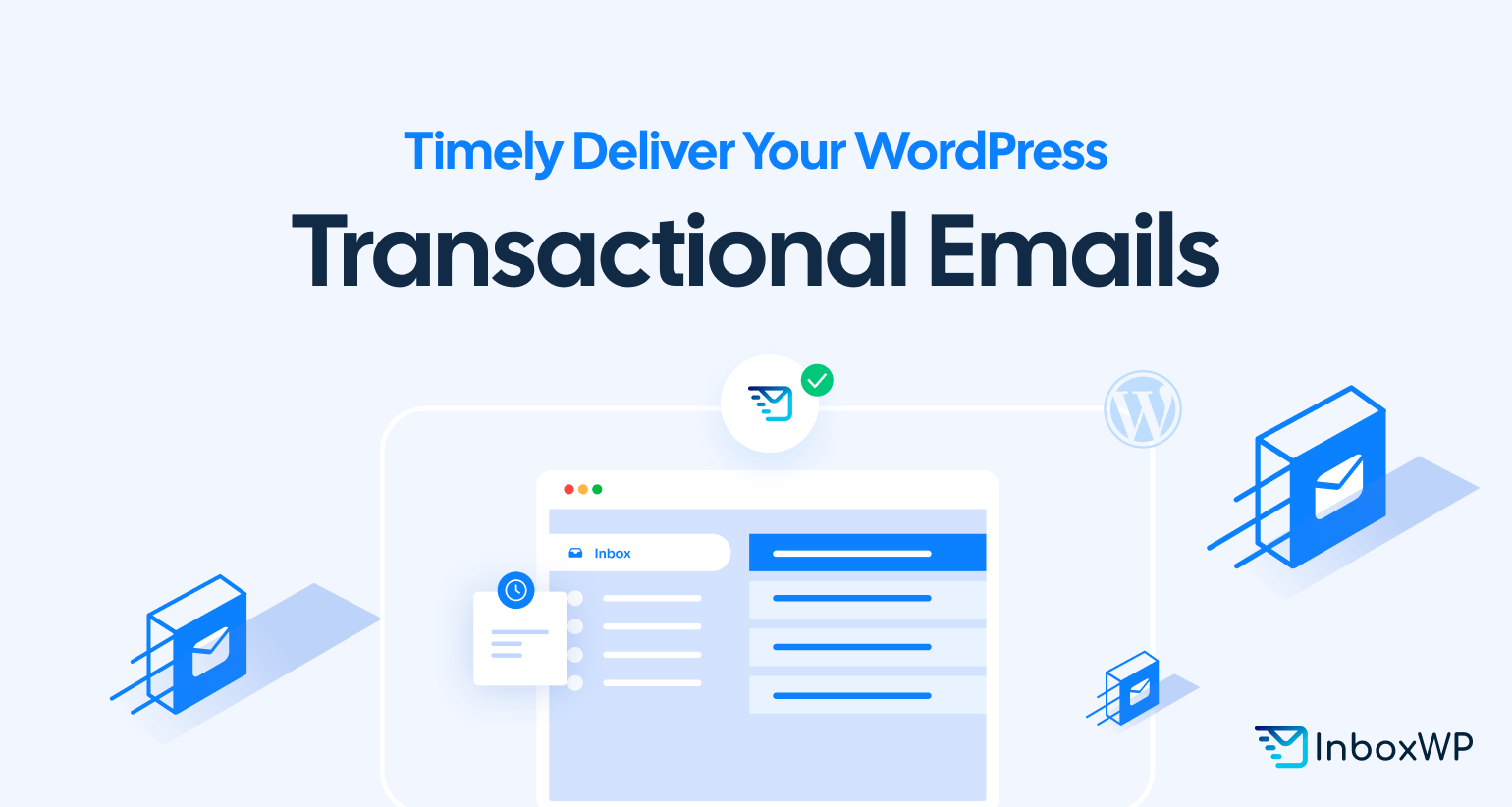
Promotional emails typically land in customers’ spam inboxes. Emails ending up in spam folders can lead to missed opportunities for engagement and sales. It’s essential to take proactive measures to maintain high deliverability rates.
For WordPress users, InboxWP offers a solution to this issue. With InboxWP, you can ensure a 99.9% email deliverability rate and help your customer retention emails reach their intended recipients’ inboxes consistently.
This not only maximizes the effectiveness of your email marketing efforts but also enhances customer engagement and retention.
Read more about InboxWP.
Ending Note
We have explored various types of customer retention emails and learned essential strategies for writing a proper one. You can leverage these insights and examples to strengthen customer relationships. Remember a returning customer can boost your business like nothing.
